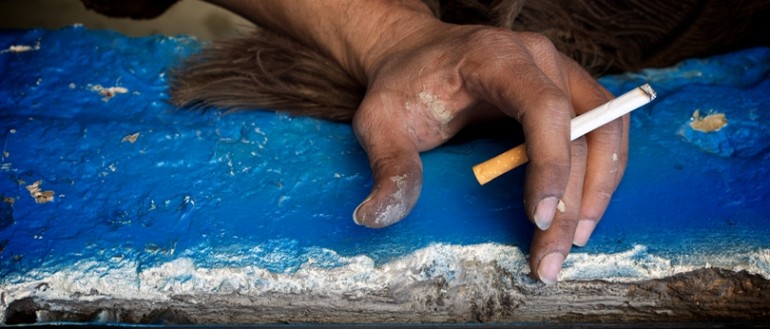Summary:
Smoking is more than twice as common among Indigenous people as it is among Australia’s mainstream population – yet Menzies has examined trends and revealed reasons for optimism.
Our research has found:
Our research found that smoking prevalence declined by approximately 0.5 per cent every year among Indigenous men in both remote and non-remote Australia, as well as among Indigenous women in non-remote Australia from 1994 to 2008. Among Indigenous women in remote Australia, smoking prevalence spiked during that period, but fortunately, has since plateaued.
- We showed an increase in rates of successful quitting; and promising signs that fewer Indigenous boys and girls are now starting to smoke
- We have shown a massive decline in heavy smoking (more than 20 cigarettes/day) among Indigenous people between 1994-2008
- We have also used wholesale data to monitor trends of tobacco consumption in remote Northern Territory (NT) Indigenous communities. This monitoring of consumption is now routine practice in all NT with data collected as a condition of new Tobacco Retail Licenses.
Consumption data has been used to monitor the impact of the introduction of welfare quarantining and the impact of a 25% tobacco tax rise. The data has shown:
- The introduction of income management had no significant impact on tobacco sales.
- Wide confidence intervals around our estimated 2% reduction in sales means that the 25% tax increase could have been associated or not with a reduction in tobacco sold in 18 stores in remote Indigenous communities. But all Indigenous interviewees supported price increases as important in reducing smoking.
Chief Investigator:
Contact information:
Project dates:
This is an ongoing study.
Funders:
- National Heart Foundation
- National Health and Medical Research Council (NHMRC)
- Thomas, D.P. (2012). Changes in smoking intensity among Aboriginal and Torres Strait Islander people, 1994-2008. Medical Journal of Australia, 197,503-506.
- Thomas, D. (2012). National trends in Aboriginal and Torres Strait Islander smoking and quitting, 1994–2008. Australian and New Zealand Journal of Public Health, 36, 24-29.
- Thomas, D.P., Fitz, J.W., Johnston, V., Townsend, J., & Kneebone, W. (2011) Wholesale data for surveillance of Australian Aboriginal tobacco consumption in the Northern Territory. Tobacco Control, 20, 291-295.
- Thomas, D.P., Ferguson, M., Johnston, V., & Brimblecombe, J. (2013). Impact of tobacco tax increase in remote Australian Aboriginal communities. Nicotine & Tobacco Research, 15(6), 1099-1106.
- Brimblecombe, J., McDonnell, J., Barnes, A., Dhurrkay, J.G., Thomas, D.P., & Bailie, R. (2010). Impact of income management on store sales in Northern Australia. Medical Journal of Australia, 192, 549-554.

